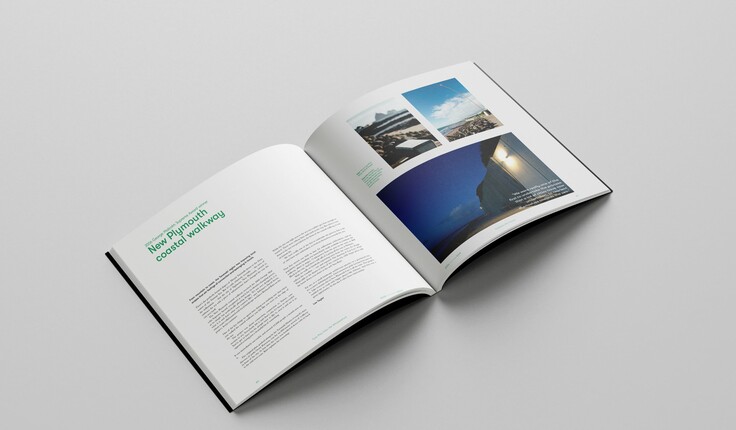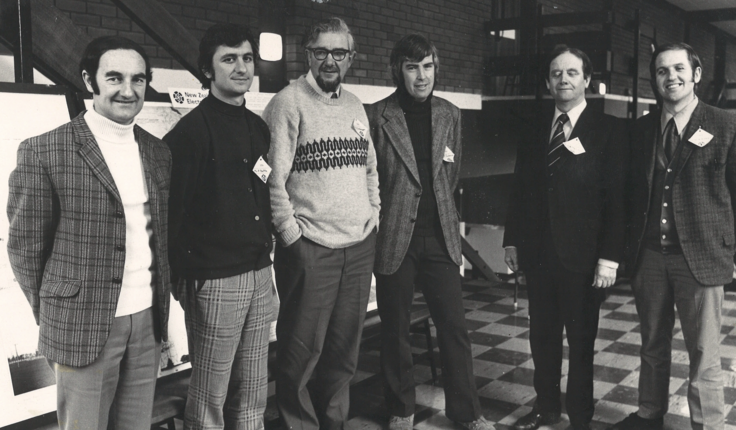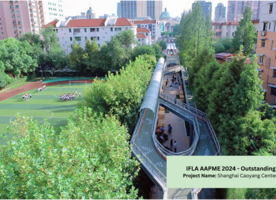News
NZILA 50th: Tuia Pito Ora - He Whakaahua
Posted 11 10 2022
in News

The book compiled to mark NZILA’s first 50 years, Tuia Pito Ora - He Whakaahua, is set for release shortly as the 2022 Firth NZILA Conference kicks off at the Cordis Hotel in Auckland tonight. The conference, of course seeks to celebrate the Institute’s 50th anniversary.
The book tracks the very early years of the landscape architecture profession here in Aotearoa, the key role Lincoln College, now Lincoln University played in the birth of the profession and the institute and it introduces many of the personalities who have shaped the profession over half a century.
In the early 1970s the landscape architecture profession was in its infancy but starting to make its presence felt strongly, particularly in government departments like the Ministry of Works, Housing Corporation, Lands and Survey, New Zealand Electricity Department and the New Zealand Forest Service.
The course set up by Charlie Challenger at Lincoln College had celebrated its first graduates the year before and a group of visionary practitioners decided it was time to establish a professional body.
In 1972 the requisite 15 eligible members of the profession - Tony Jackman, Frank Boffa, Charlie Challenger, Robin Gay, Bill McLeary, Frank Spacil, Eleanor Ironside, Sally Mason, Esmae Sage, Ray Wright, Patricia Shiel, Neil Aitken, Hugh Baxter, George Malcolm, and Paula Parsonson lodged an application to incorporate the New Zealand Institute of Landscape Architects
They argued "the expression 'landscape architecture' was recognised throughout the English-speaking world and accordingly the public in New Zealand was entitled to expect the words to be used as indicative of a recognised professional group with established standards".
The Institute held its first general meeting a year later and declared as its primary objective the promotion of landscape architecture as "a fundamental design, planning and conservation profession, and a conscious departure from its former largely horticultural and remedial role".
Over half a century the institute has grown, lobbied, published and pushed the landscape architecture profession into what we see today.
It has taken a lead in issues such as climate change, sustainability, landscape assessment guidelines, professional development and kaupapa maori while promoting and challenging the profession through conferences, award programmes, education, professional development and more.
There are now three schools of landscape architecture in Aotearoa NZ, Unitec in Auckland and Victoria University in Wellington have joined Lincoln. All three schools are monitored by the NZILA by a Course Accreditation Committee which liaises with the respective schools and their parent universities.
Tuia Pito Ora - He Whakaahua takes us from the 1970s to the 80s and a decade of enormous change. The advent of Rogernomics meants private practice and consultancy became increasingly prevalent and this continued into the 1990s.

The book also looks at the types of projects and work landscape architect have been involved with which has changed over time.
The early years were typified by large scale, open space projects such as highway, housing and hydro-electric work. This evolved during the 80s into more urban work. Today landscape architects are involved in a huge variety of work from masterplanning to planning and managing landscapes such as national parks and wetlands, assessing or analysing the landscape, undertaking landscape and project management, or even designing private garden.
They are playing an increasingly important role in addressing some of the great issues of our day, including climate change, sustainable communities, water quality and innovative housing.
In 2022 the climate change crisis is front of mind but for landscape architects, sustainability and environmental protection has always been at the heart of the profession.
Jan Woodhouse says most early landscape architect students had a clear goal. “Many of us wanted to combine creativity with care for the environment.”
This kaupapa continues today but as Matthew Bradbury writes in Tuia Pito Ora - He Whakaahua; “as the effects of climate change worsen with considerable large-scale damage to both lives and property, the necessity for governments to protect their citizens will become more urgent.”
Tony Jackman, the inaugural president of the NZILA says the profession had an early understanding of the need to understand, appreciate and partner with mana whenua on landscape issues.
And the book goes international too. Landscape architects from Aotearoa are active around the world. Not only have our professionals taken on the traditional kiwi ‘OE’ and found their places in overseas studios, but the strong reputation of landscape architects based in New Zealand are also sought after for international projects and have been successful in international awards.
It will also examine the strong part kiwis have in played in the International Federation of Landscape Architects. In 2006 and Di Menzies was voted in as president. Before her, Robin Gay had been Vice President in the 80s and many other kiwi landscape architects have had official involvement with IFLA. Indeed the current IFLA president is Dr Bruno Marques from Victoria University of Wellington.
In compiling this book, Tuia Pito Ora New Zealand Institute of Landscape Architects wanted to provide a snapshot of the profession as a celebration of a key milestone. The 50th anniversary of the NZILA is the catalyst but Tuia Pito Ora - He Whakaahua sets out to celebrate the evolution of the profession as a whole.
Share
10 Dec
Proposed replacement of the RMA: Planning Bill and Natural Environment Bill

A message from the Environmental Legislation Working Group
On Tuesday this week, the Government released proposed bills to replace the Resource Management Act 1991. Reform of our planning …
03 Dec
Newly Registered Landscape Architects 2025

Celebrating professional achievement across Aotearoa The 2025 Registration process is now nearing completion, and we are delighted to acknowledge the …
02 Dec
2025 IFLA APR Newsletter

November Edition
2025 IFLA APR Newsletter: November Edition November brings exciting updates from across the region. We’re welcoming the new IFLA APR …
Events calendar
Full 2025 calendar